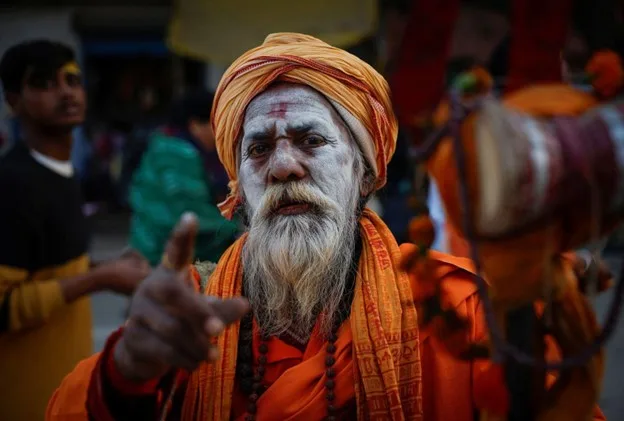The festival economy: A Priceless Moment in Time Worth GBP 280 Billion in Trade
Jairaj Mashru looks at the festival economy and how these large events drive creativity and innovation.
The Kumbh Mela is a huge festival of faith and culture held in India. In January 2025, it had particular significance as the Maha (Grand) Kumbh Festival, which only occurs every 144 years. An estimated 650 million people travelled to participate in the 45-day Hindu celebration, setting new records for the single largest cultural festival in the world. While this year saw the highest ever participation, including more than 2 million international visitors from over 73 countries, much of the fervour was driven by the fact that none of us will be around for the next Mahakumbh in the year 2169.
The origins of the Kumbh Mela can be traced back to several ancient Hindu texts, or Puranas, which describe a fierce battle between the gods (Devas) and demons (Asuras) for the Amrit Kalash, a pot or kumbh containing the nectar of immortality extracted by churning the cosmic ocean. During the ensuing struggle, drops of the divine elixir spilled upon four sites on earth that became sacred: Prayagraj, Haridwar, Ujjain, and Nashik. These sites, where multiple rivers meet, are believed to be imbued with divine energy, and each place hosts the Kumbh Mela in rotation every 12 years.
The Kumbh Mela was first recognised by UNESCO as intangible cultural heritage in 2016, yet the oldest written records of the festival date back at least 500 years. The Kumbh Mela has come a long way from its humble origins as a duodecennial gathering of leaders from various Hindu sects, or Akharas, to discuss social issues and evolve their teachings and guidelines for the well-being of individuals and society.
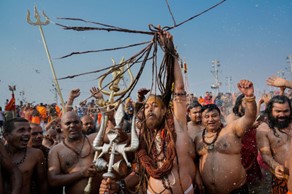
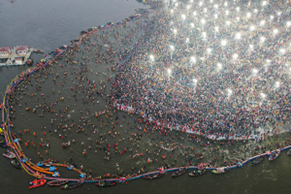
A Confluence of Culture, Commerce, and Creativity
Alongside its spiritual significance, the festival provides a unique opportunity to share India’s culture with the world while demonstrating creativity in design, innovation, planning, and execution on the largest scale anywhere on the planet. With estimated economic activity of around GBP 280 billion (USD 360 billion) and 1.2 million jobs at the festival, the Mahakumbh has become the greatest cultural event of our lifetime, transforming tradition into mega festivals of modern culture.
Today, the Kumbh Mela has been transformed by a confluence of three very powerful economic forces – culture, creativity, and commerce. With 20 million visitors arriving daily to a place with less than 2 million residents and severely limited infrastructure, the government and various other partners had to build a new temporary city along the riverbanks. The total estimated government expenditure for the festival was just under $2 billion.
Covering a total area of 4000 hectares, the Mela was equipped with power, water, and sanitation to support at least 160,000 tents, 50,000 shops, 30 ponton bridges across the river, 80,000 security and administrative personnel, 2000 medical staff, 2750 AI-enabled CCTV and drone cameras, 50 fire stations, emergency response centres and thousands of additional flights, trains, and buses to host millions of pilgrims. Large numbers of travellers drove up the prices of flight tickets, local taxis and rickshaws, riverboats and just about everything else, leaving Taylor Swift or Coldplay concerts far behind in terms of overall impact on the local economy.
The festival is a unique opportunity for brands to make their presence visible to millions of consumers. This year, companies like Amazon provided temporary beds made by upcycling their packaging, while Pidilite, the makers of the popular Fevicol glue, handed out T-shirts that can be worn by 2-3 people together to prevent separation in the large crowds. Many internationally recognised firms and NGOs gave out branded merchandise or provided free meal services and health check-ups.

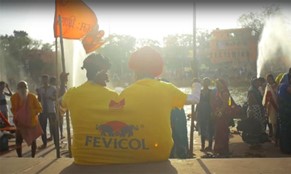
Indian startups also took the opportunity to build customers and generate revenue. Sri Mandir, a spiritual-tech startup, made the Mahakumbh experience accessible by offering personalised and remote worship. The most impressive use of technology, captivating the attention and imagination of millions of visitors at once, was the drone shows created by BotLab Dynamics using 2500 drones with LEDs to recreate the Hindu stories in the evening sky. While Chaipoint, a cafe chain startup, aimed to sell a record of more than 10 million cups of tea at a single event.
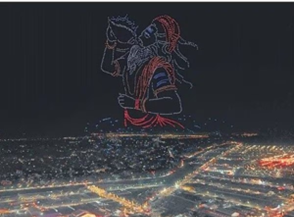

Since the previous festival in 2015, MIT and Digital Impact Square have been organising Kumbhathons, a hackathon for startups to address challenges faced by the Kumbh. Creative company founders can learn more about the issues faced by the authorities firsthand, as well as find mentors and investors to support them as they develop innovative solutions.
Social media played a huge role at the Mahakumbh. User-generated content showed people in their orange clothing wearing Rudraksha malas (necklaces or bracelets of holy beads), enjoying the incredible scale of the facilities inside the Mela. Influencers drove up their fees as well, fetching £3000 or more per post.
The Mahakumbh Mela could be considered the world’s largest cultural innovation lab. One can only wonder what kind of novel and creative ideas will emerge in future iterations..
Main Image: Sharafat Ali, Reuters
